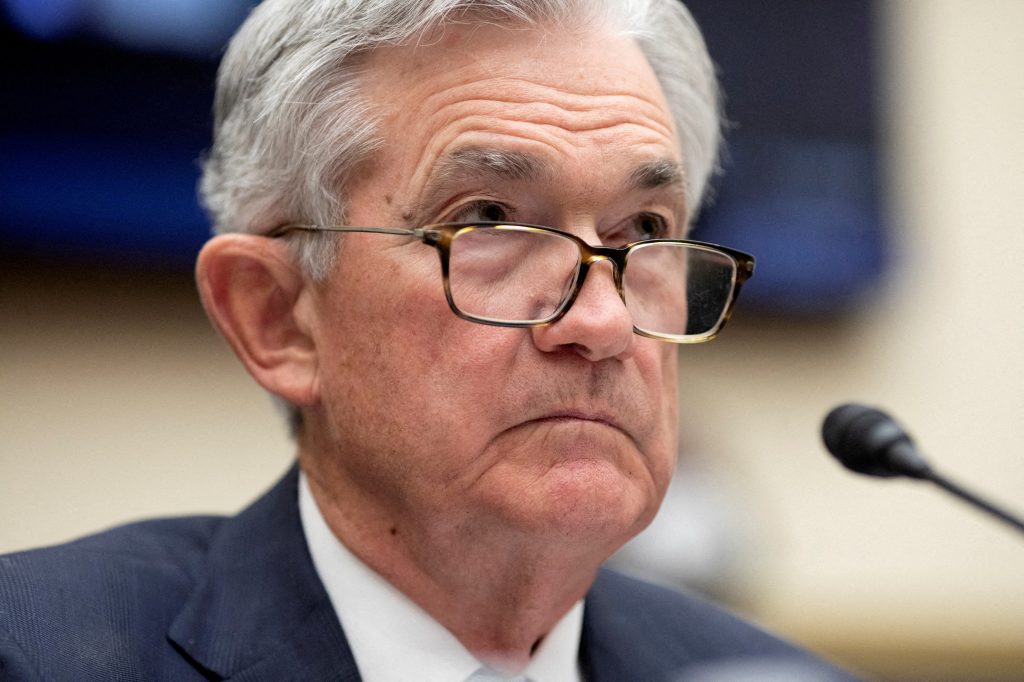Trading the 10-year Yield’s Move Above 3%
Interest rates remain in focus as the U.S. Federal Reserve is expected to increase benchmark rates two more times this summer, ultimately raising the federal funds rate to 1.75%.

Interest rates have been in focus on Wall Street this year, and they remain so with an important two-day meeting of the U.S. Federal Reserve set for June 14-15 and July 26-27.
The Fed has already raised benchmark rates in the United States from effectively zero percent to 0.75% in 2022. It’s expected that the central bank will increase rates by another 0.50% during the June meeting, and another 0.50% during the July meeting.
That means the next couple of months could see the federal funds rate in the U.S. jump from 0.75% to 1.75%. The federal funds rate is set by the Federal Reserve and does not fluctuate according to market forces.
However, free-floating instruments in the market—such as the U.S. 10-year Treasury yield—have been moving in anticipation of another rate hike.
At the start of 2022, the yield on the 10-year Treasury was trading about 1.50%. But as of early June, the 10-year Treasury yield is now trading north of 3%.
Over the last five years, the 10-year yield has ranged between roughly 0.35% and 3.15%—illustrating that this important barometer of U.S. interest rates is currently trading near the upper end of its historical range. The last time the 10-year yield traded above 3.50% was in 2010.
Some projections suggest that the 10-year yield could crack 4% at some point in 2022, and possibly even rise above 5% in 2023.
However, those are low confidence estimates, because prevailing interest rates are so highly correlated with the underlying economy. That means it’s difficult to predict where the 10-year yield will trade a year or two from now.
At present, the most important catalysts for rates-sensitive financial instruments are the next two meetings of the Federal Reserve’s Open Market Committee, or FOMC, which is responsible for rates-related policy decisions in the U.S.
With the Fed expected to raise benchmark rates by half of a percentage point during each of those meetings, the expectation is that the 10-year yield will likely continue to climb for the foreseeable future.
But it’s difficult to predict how the Fed might behave. After the July meeting, the FOMC doesn’t convene again until Sept. 20-21.
Trading Interest Rates, Yields and Bond-Focused ETFs
One easy way to trade one’s outlook on rates is to use a futures-orientated product such as the Small Treasury Yield (S10Y) offered by the Small Exchange.
The S10Y is directly tied to the percentage yield of the U.S. 10-year Treasury bond, one of the most widely accepted benchmarks for global rates. Yield is another way of expressing the concept of an interest rate, although it refers to the return side of a debt investment.
Interest rates and yields tend to be highly correlated, meaning that a rising rates environment is usually accompanied by rising yields, and vice versa.
That means an investor or trader expecting interest rates to rise (reflected in rising Treasury yields) might consider purchasing the S10Y. Conversely, a trader expecting interest rates to decline might sell the S10Y.
To learn more about trading interest rates using Treasury Yield futures offered by the Small Exchange, review the following episodes of Small Stakes:
- Small Stakes: Introducing the Small Treasury Yield (S10Y)
- Small Stakes: How to Trade Interest Rate Futures
- Small Stakes: Managing Stock Risk with Bonds
Yields aren’t the only avenue for trading interest rates, though, as investors and traders can also tap bond-focused products to access rates exposure.
Unlike interest rates and yields, which share a strong, positive correlation, bond prices and interest rates share a strong inverse correlation. That means when interest rates are rising, bond prices are usually moving lower.
This occurs because existing bonds become relatively less attractive to newly issued bonds, as they will theoretically be issued with the as higher interest rate.
So, as interest rates and yields go up, financial instruments tied to bond prices typically move lower. This inverse correlation is illustrated in the graphic below, which shows how global bonds valuations have suffered as global interest rates have increased.
Based on this inverse correlation between interest rates and bond prices, market participants can also use bond-focused ETFs to trade the changing rates environment.
However, in this case, if an investor or trader expected further increases in rates/yields, then he or she might establish a short position in a bond-focused ETF. Or, if an investor or trader expects interest rates to stop rising, or even reverse course, then he or she might deploy a bullish position in a bond-focused ETF.
Some of the best-known bond ETFs include the iShares 20+ Year Treasury Bond ETF (TLT), the iShares iBoxx $ Investment Grade Corporate Bond ETF (LQD), and the iShares J.P. Morgan USD Emerging Markets Bond ETF (EMB). TLT is focused on long-term U.S. government bonds, whereas LQD focuses on corporate bonds, and EMB focuses on bonds from emerging markets.
Considering that rates have increased substantially in 2022, it’s no surprise that each of the three ETFs has declined substantially in 2022, with TLT down roughly 20%, LQD down 13%, and EMB down 15% so far this year. Depending on one’s outlook on rates, there may be opportunities to trade or invest in these products going forward.
To learn more about trading bond-focused ETFs like TLT, review this previous installment of Market Measures on the tastytrade financial network.
To follow everything moving the markets this summer, tune into TASTYTRADE LIVE.
Sage Anderson is a pseudonym. He’s an experienced trader of equity derivatives and has managed volatility-based portfolios as a former prop trading firm employee. He’s not an employee of Luckbox, tastytrade or any affiliated companies. Readers can direct questions about this blog or other trading-related subjects, to support@luckboxmagazine.com.



















